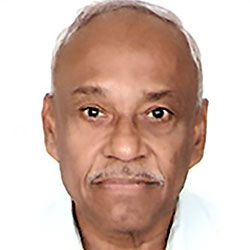


Mr SS Iyer

The growth of the non wovens sector will have a direct impact on the fibre sector, particularly the polypropylene and polyester fibre segment. However, the share of polypropylene fibres in nonwovens industries in US and Europe is higher than that of polyester, while the consumption of virgin polyester/reprocessed polyester fibres is more than polypropylene fibres in India. Nonwovens are rapidly growing in the following areas – 1) Automobile segment – cars, carpets, acoustic/thermal insulation, backing for tufted carpets, liner for trunks, storage box, filters, and seat upholstery. 2) Hygiene products – Disposable diapers, female hygiene products and adult incontinence products. 3) Civil Engineering geotextiles – Road under lays, erosion control, canal lining, artificial turfs and pavement overlays. 4) Filtration - Dust filters, liquid filters, oil filters, air conditioner filters and filters for pharmaceutical producers. 5) Medical textiles – Disposable and surgical apparel, shoulder pads, gloves, etc. 6) Consumer products – Reusable carry bags, vacuum cleaner bags, tea bags, wipes, carpets and bath mats.
A wide range of fibres – both synthetic and natural are used in the production of nonwoven fabrics. The traditional fibres are polyester, polypropylene, cotton, rayon and wool. Hitech fibres like Aramid fibres, Bicomponent fibres, super absorbent fibres, spandex, glass and nano fibres. However of all, polypropylene fibres have very good characteristics like hydrophobic, voluminous and thermoplastic. Polyester fibres are used where strength and mechanical properties are of prime importance. Bicomponent fibres are used in thermally bonded nonwoven fabrics and super absorbent fibres are used in hygienic products.
India has a large textile manufacturing base and has the potential to become a leading producer and exporter of nonwoven products. The cooperation between fibre suppliers and nonwoven fibre producers is an important factor for the growth of the industry. Unlike Europe and USA, the technical textiles industry in India is still at a nascent stage and is widely fragmented. This leads to lower production and high cost. Product knowledge and expertise too are available to a limited extent. Investment in latest technology for production of nonwoven products is essential for the sector to chart its own course. Till that time, the industry will have to follow the model set up by European and US producers.
Anticipating more demand for polypropylene fibres from the growing nonwovens sector, we have recently doubled and increased our production capacity in June 2012. Currently we have an installed capacity of 8,400 tons per annum, which was doubled from 4,200 tons per year. The use of geo textiles in major infrastructure projects need policy guidelines, regulations and standardization, which makes use of polypropylene fibres mandatory in applications where sturdy and tough fabrics are needed for particular applications in railways, roads, etc.
Polypropylene staple fibres manufactured by Zenith Fibres are suitable for use in nonwoven carded needle felt fabrics. Currently, we are selling around 75 percent of our polypropylene fibres production to the nonwovens sector, while the rest is sold to conventional textile producers.
DISCLAIMER: All views and opinions expressed in this column are solely of the interviewee, and they do not reflect in any way the opinion of technicaltextile.net.